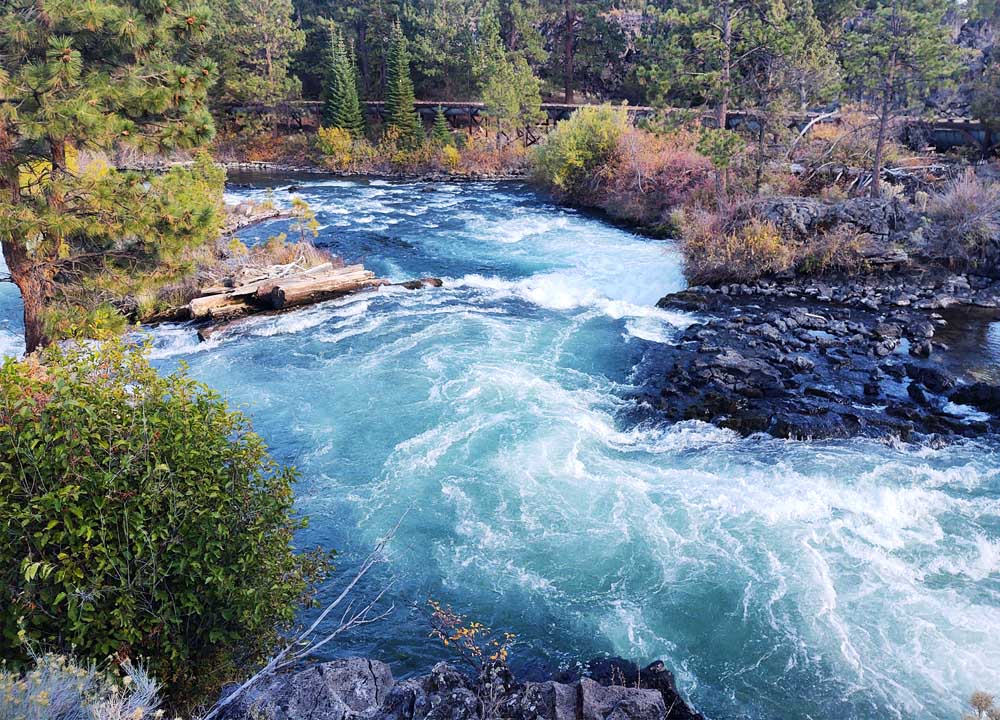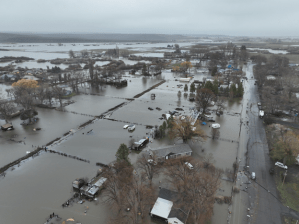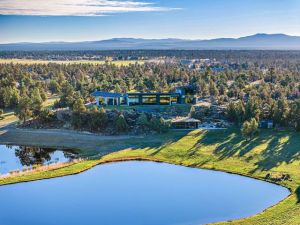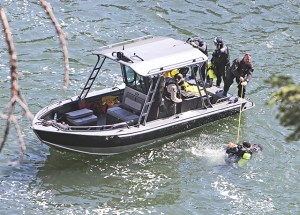River near Bend too risky to retrieve kayaker’s remains
Published 4:16 pm Friday, August 12, 2022

- Water flows down a section of Lava Island Falls on the Deschutes River in 2021.
The general location of the body of Alex Kollar, the kayaker who went missing on the Deschutes River last fall, is known, but conditions on the river make it far too dangerous to safely retrieve his remains.
Kollar was reported missing on the Deschutes River on Oct. 1 after he was last seen by friends upstream from Meadow Camp near Lava Island Falls.
Trending
That stretch of the river is classified as Class IV and V whitewater, conditions characterized by extreme difficulty and danger.
As the search efforts went cold, law enforcement and rescue personnel operated on the assumption Kollar was dead. In February, the Deschutes County Sheriff’s Office suspended the active search and recovery, scaling down its efforts, but classifying the case as a missing person case pending new information.
During the initial search in the fall, cadaver dogs picked up on Kollar’s scent in the lower portion of Lava Island Falls. But according to law enforcement and search and rescue divers with the sheriff’s office, the area of the river where Kollar’s body is believed to be is far too hazardous for divers to enter in order to look for and retrieve his remains.
“Our cadaver dogs alerted to the scent of human remains under the water,” Lt. Mike Biondi of the Deschutes County Sheriff’s Office told the Bulletin via email. “It is difficult to accurately predict how far upstream the remains would be. Generally, we believe he is located in the lower portion of Lava Island Falls.”
“There is no safe way to search that portion of the river due to current and underwater obstructions,” Biondi said.
Biondi added that it would not be advisable for anyone to attempt to search the area further given the hazardous conditions on that particular stretch of the river.
Trending
Sean Jones, a diver with Deschutes County Search and Rescue, said he was part of the initial search effort for Kollar’s body. Jones has been diving for the search and rescue team for 21 years, and he would not advise any attempt to retrieve Kollar’s remains, he said.
“Would I advise somebody to go into Class V whitewater? No. Not under those conditions,” Jones said. “If you are talking about pure safety, it is not advisable. And would I want somebody to go in there and do it? No.”
Jones said any attempt to enter the river and retrieve Kollar’s remains could result in him and his colleagues in turn having to risk their lives in their capacity as search and rescue personnel.
“Anytime you have moving water, it’s moving at a high velocity through obstacles, you have no visibility, you have reduced ability to move, and you can’t stay still,” Jones said of conditions on the river. “You get blown out of position; you physically can’t hold on. So, the water moves underneath you and lifts you up and you are in the current again, and you can’t stay.”
Jones said that under certain conditions, it is physically impossible to escape once a person is stuck in the river fighting against the rushing water.
“There becomes a point where the water is moving and being so dynamic a person can’t just go into a spot and stop. And then the risk of entrapment. There are logs and rocks and holes and stuff in there and say, if your leg goes through it, and the velocity of the water is stronger than you are, you’re stuck,” Jones said.
He added that such conditions could be mitigated by a highly involved process using ropes, extra personnel and certain physical barriers used to divert water flow. However, for Jones and his colleagues on the search and rescue team, the number one priority is the preservation of life.
Kelli Wittman of Tumalo Creek Kayak & Canoe said while a lot of the river close to Bend is classified as difficult or expert whitewater, the majority of deaths occur on milder water.
“Most deaths and casualties happen on Class II and Class III water because there is a lot of river etiquette or river knowledge that sometimes people either get passive about or complacent about because they are a harder paddler, or because they simply don’t know and are just getting into the sport,” Wittman said “But more casualties happen on those easier sections than those harder sections.”
Wittman said some of the most common hazards on the river are downed trees, which are always moving and could be there one day and gone the next. Rocks with holes in them are easy to get stuck in, she said, and the powerful current of the river is capable of erosion, creating voids underneath rocks that could trap people.
“In this kind of situation, you might not come out at all,” Wittman said. “We definitely try to run our lines and set up safety around those kinds of hazards so that if something were to happen our team is set up to help get you out of there.”
“It’s definitely a wild river. It always changes. It always has risks,” Whitman added. “It is not guaranteed safety.”








